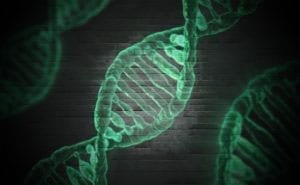Mucolipidoses (ML)
What is mucolipidoses (ML)?
Mucolipidosis is an umbrella term referring to a group of metabolic diseases that affect the body’s ability to do normal processes involving the turnover of materials within cells. In these mucolipidoses, abnormally high amounts of carbohydrates and fatty materials, or lipids, accumulate inside cells. Since human cells aren’t made to handle large amounts of these substances, the cells are damaged, which is what causes symptoms. Symptoms can vary greatly in severity. They can be present at birth or begin in early childhood.What are the different types of mucolipidoses?
- ML Type I: Sialidosis
- ML Type II: I-cell Disease
- ML Type III: Pseudo-Hurler Polydystrophy
- ML Type IV: Mucolipidosis Type IV
What are the symptoms of mucolipidoses?
Symptoms can vary depending on the type of the disease, but some common symptoms include:- Mild to severe learning disabilities
- Skeletal deformities
- Vision problems
- Developmental delay
- Mental retardation
- Poorly functioning spleen and/or liver
What causes mucolipidoses?
As mentioned earlier, in mucolipidoses abnormally high amounts of substances accumulate in cells. This happens inside the lysosomes, organelles within most cells that break down substances into smaller materials, so they can be used again in the metabolic process. Lysosomes do this with enzymes, which are proteins that help the body’s processes work more efficiently. The people with mucolipidoses are born with a defect in their genetics that lessens the amount of enzymes the body creates, or causes the enzymes that are produced to be ineffective. Without properly working enzymes, lysosomes can’t break down lipids and carbohydrates, which leads to the accumulation of those materials, and then organ damage. The body often affected are: bone marrow, nerve tissue, liver tissue, and muscle tissue. Since there are many kinds of enzymes inside the lysosomes that can mutate, each of the four types of mucolipidosis is classified according to the enzyme or protein that has been mutated. Human traits are inherited from a person’s father and mother; each one contributes a copy of a gene, which interacts with the other copy. The mucolipidoses are inherited in an autosomal recessive pattern, which means that both parents need to pass down a copy of the defective gene for the condition to occur. The affected gene in each type of mucolipidosis is:- Sialidosis: NEU1 gene, which mutates neuraminidase, a digestive enzyme
- I-cell Disease and Pseudo-Hurler Polydystrophy: GNPTAB gene, which causes a deficiency in an enzyme called N-acetylglucosamine-1-phosphotransferase
- Mucolipidosis IV: MCOLN1 gene, which affects the production of the protein mucolipin-1
How is mucolipidoses diagnosed?
Mucolipidosis can be diagnosed using the following procedures:- Thorough medical history
- Findings of characteristic symptoms
- Laboratory tests
- Blood tests to measure enzyme activity in white blood cells (finding lower than normal activity levels indicate deficiencies in specific enzymes)
- Skin biopsy
- Prenatal diagnosis can be accomplished through chorionic villus sampling (CVS) and amniocentesis
What are the treatments for mucolipidoses?
Possible treatment includes:- Genetic counseling
- Psychological counseling
- A variety of symptomatic and supportive therapies
- Surgery to treat clouding of the cornea in the eye
- Physical therapy
- Speech therapy
- Nutritional supplements
Where can I find out more about mucolipidoses?
Mucolipidoses (ML) Articles


ISMRD International Conference for Glycoprotein Storage Diseases Coming This July
Trudy Horsting
April 18, 2019
Read More »

Research Suggests a Multiple Sclerosis Treatment May Also Benefit Mucolipidosis IV
Anna Hewitt
June 5, 2018
Read More »






